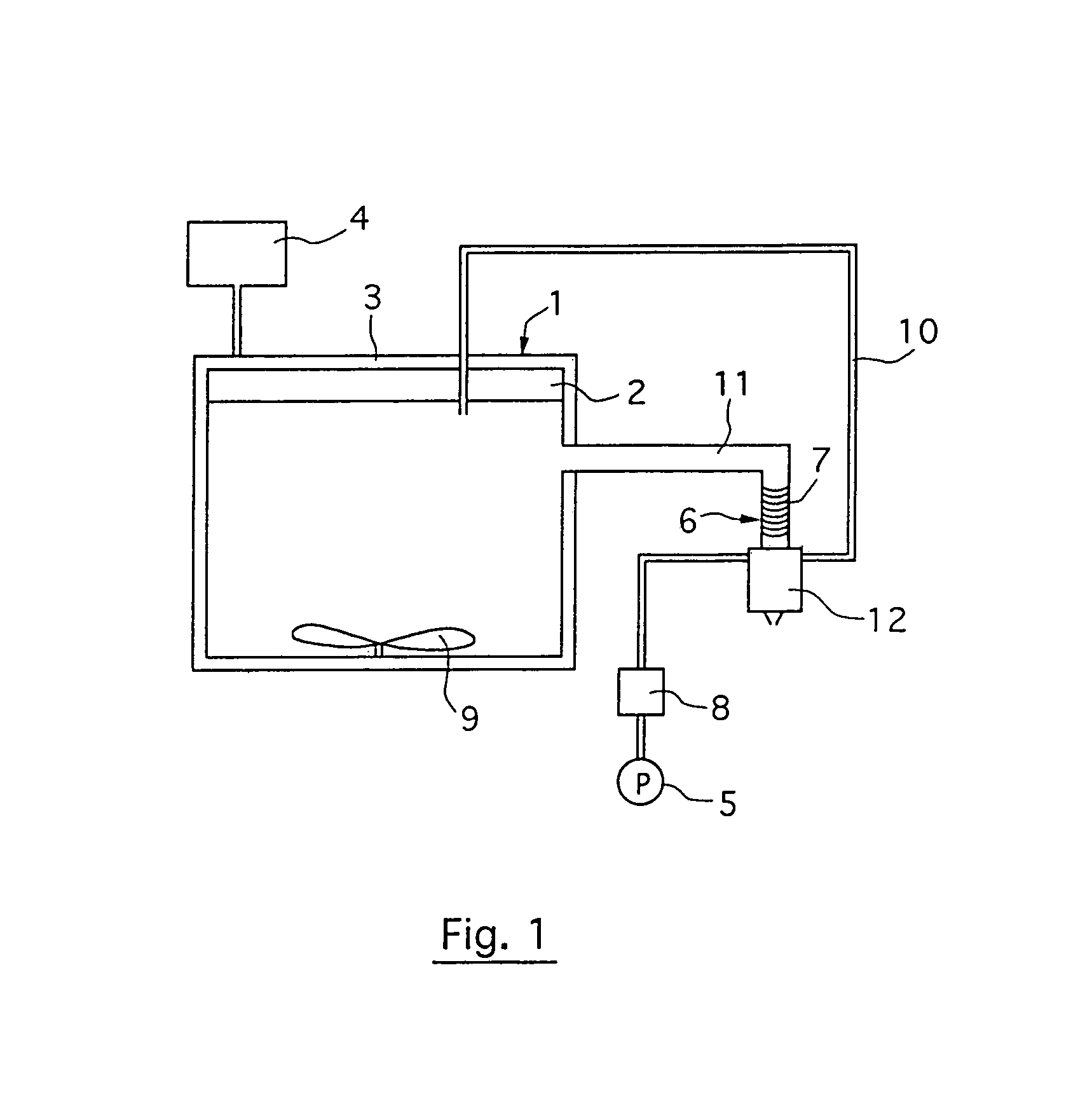Method and plant for solvent-free microwave extraction of natural products
- Summary
- Abstract
- Description
- Claims
- Application Information
AI Technical Summary
Benefits of technology
Problems solved by technology
Method used
Image
Examples
example 1
[0075]A kilogram of peppermint (Mentha piperita L., Hungarian variety) with 15% of dry matter was placed within the enclosure 1. The heating means 4 were set in such a way that the thermostat-controlled wall 3 induced a temperature of about 70° C. within the enclosure 1 and the stirring means 9 were applied so as to have a speed of 40 rpm.
[0076]The power put out by the microwave generation means 2 is 1150 W and the power reflected varies between 170 W and 220 W. During the extraction operation, which lasted 15 minutes, the power actually absorbed was therefore 930 to 980 W.
[0077]During the extraction, the pump 5 was used to lower the pressure to 250 mb. This reduction of pressure was effected after 5 minutes, 10 minutes and 13 minutes.
[0078]Furthermore, the temperature of the refrigeration medium flowing in the winding tube 7 was set at 5° C. so as to prompt the condensation of the vapors resulting from the effect of the microwaves on the peppermint and containing the essential oil....
example 2
[0083]The same quantity of peppermint as in the example 1 was processed under the same operating conditions as in example 1 but by making the pump 2 work continuously in such a way that the pressure prevailing within the enclosure 1 was set at 250 mb throughout the extraction operation.
[0084]The changes in the temperature of the mint and in the pressure in the enclosure are given in FIG. 4.
[0085]Referring to FIG. 5, the essential oil yield was then only 0.2 ml for 100 g, namely five times less than in the example 1. A quantity of 1150 mg of essential oil was recovered from the residue of mint after the extraction operation. These results showed the importance of the intermittent character that must be given, according to the invention, to pressure reduction inside the enclosure.
example 3
[0086]Five hundred grams of garden sage (Salvia officinalis L.) having 25% of dry matter was placed inside the enclosure 1. The heating means 4 were set so that the thermostat-controlled wall 3 induced a temperature of about 70° C. within the enclosure 1 and the stirring means 9 were applied so as to have a speed of 40 rpm.
[0087]The power put out by the microwave generation means 2 is 1000 W and the power reflected varies between 150 W and 200 W. During the extraction operation, which lasted 10 minutes, the power actually absorbed was therefore 800 to 850 W.
[0088]During the extraction, the pump 5 was used to lower the pressure to 250 mb. This reduction of pressure was effected after 3.5 minutes and 7 minutes.
[0089]Furthermore, the temperature of the refrigeration medium flowing in the winding tube 7 was set at 7° C. so as to prompt the condensation of the vapors resulting from the effect of the microwaves on the peppermint and containing the essential oil.
[0090]The changes in the te...
PUM
 Login to View More
Login to View More Abstract
Description
Claims
Application Information
 Login to View More
Login to View More - R&D
- Intellectual Property
- Life Sciences
- Materials
- Tech Scout
- Unparalleled Data Quality
- Higher Quality Content
- 60% Fewer Hallucinations
Browse by: Latest US Patents, China's latest patents, Technical Efficacy Thesaurus, Application Domain, Technology Topic, Popular Technical Reports.
© 2025 PatSnap. All rights reserved.Legal|Privacy policy|Modern Slavery Act Transparency Statement|Sitemap|About US| Contact US: help@patsnap.com



